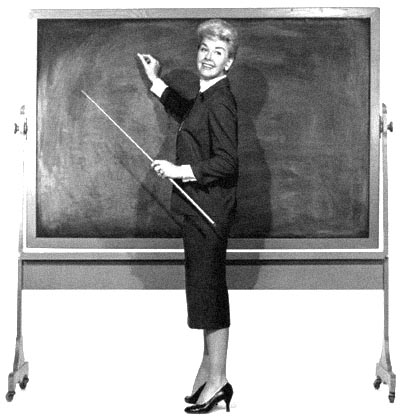« Best of JM: Improvising: A three-pronged attack |
Main
| Best of JM: Improvising--Throwing mud on the wall »
 July 28, 2011 | Best of JM: Sitting on the edge of their seats July 28, 2011 | Best of JM: Sitting on the edge of their seats
Enjoy the popular archive material below.
From September 24, 2009: "Sitting on the edge of their seats"
The teacher walks to the front of her rowdy fifth graders, taking her position silently midst the boisterous pre-teen pandemonium, face assuming a deadpan seriousness, as the ambient noise starts to drop from the air like wounded WWII bombers. One by one, the class members stop their activity and turn their full attention to her, some literally at the edge of their seat in anticipation of her next move.
She has their attention now, and notice she did not fight noise with even louder noise. Her twenty-five plus years experience had taught her early in her career that she could never compete with twenty-four screaming vessels of pre-adolescent hormones. This approach was not only easier on her voice and nerves, it really modeled for her class the sensitivity they would need to absorb the morning and afternoon's pedagogy. Teaching is a marathon, not a sprint. For her, effectiveness meant it couldn't even be a long series of sprints.

Performing for an audience is like teaching. You need their attention, and though louder/faster/higher certainly is one way of claiming it, the impact is short-lived. A church youth pastor described the phenomenon this way, "I'm continually working with a 'three-worm crowd.' You can eat two worms in front of them, but by the time you chew the third, you've probably already lost their attention." The better way, assuming you really are in an environment to get their interest (certainly in some Bluegrass jams this might be impossible), using sparseness and subtlety in dynamics is a whole lot better way of achieving audience focus. Plus, it's a much better aesthetic experience for both audience AND perfomer.
What are the elements you can use to earn their focus?
Silence: Strategic long rests can be a good thing. Giving the audience a break allows their concentration to regroup, to clean the slate. It's also an effective contrast from the "busy" you will incorporate later. Even midstream "space" gives the mind a chance to absorb all the great things you are playing.
Expression: Dynamics are a good thing. It's easy to go on autopilot and play at the same level of volume, a huge mistake for the novice. Accents, crescendos, sforzandos, all 'em Eye-talian words you learned in elementary school still mean something.
Articulations: Tremolos, hammer-ons, pull-offs, these are all the really cool things you can do with finger and pick to make the music interesting. All downstrokes make for very dull listening. Give it some spice.
In the long run, it's subtlety that commands attention. If you really want your audience to listen, you'll use it!
Further:
Is it pretty?
Signature Tone
Dynamic Results
Real Swell...
An object in motion...
Posted by Ted at July 28, 2011 5:18 AM

Disclaimer: In the 'Information Age' of the 21st Century,
any fool with a computer, a modem, and an idea can
become a self-professed 'expert." This site does not
come equipped with 'discernment.'
|



